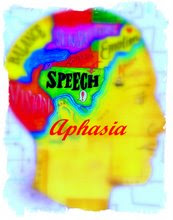Doctors in Belgium have freed a hospital patient from a 23-year nightmare after discovering the man had been misdiagnosed with a coma.
Rom Houben, now 46, suffered serious injuries in a 1983 car accident, leading doctors to conclude he lived in a persistent vegetative state, but new testing techniques revealed Houben’s brain remained fully functioning throughout the two decade ordeal. Next...
Monday, November 23, 2009
Saturday, November 21, 2009
Born with half a brain, woman living full life
Sunday, November 15, 2009
Spreading the message
Singalong the right prescription for patients
THERAPEUTIC SINGALONG: Parkinsons sufferer Iris Matheson is finding the CeleBRation Choir is helping her to walk more confidently.
The CeleBRation Choir is not your average choir. Set up in September by Auckland University's Centre for Brain Research, it uses music as therapy to help people with neurological conditions such as huntington's or motor neurone disease.
The weekly sessions at the Tamaki Campus in Glen Innes provide an opportunity for patients and their caregivers to get together and enjoy a sing-along.
Music therapist Alison Cooper says it is the first choir of its type in New Zealand...NEXT........
Friday, November 13, 2009
Tuesday, November 10, 2009
Audeo devices decodes speech for the speechless

Speech requires a few things: an electro-chemical signal rocketing from the brain, a release of air from the lungs, the vibration of your vocal cords and the phonemic mouth movements of your lips to shape the words. But what if you have a tracheotomy, and are physically hindered from speech? How do you speak then?
You’re probably familiar with the existing technology to measure the vibration of vocal cords and turn it into speech: a little box pressed up against the throat. You’ve probably seen a character on television use it, such as South Park. But the sounds it generates are grating and inhuman.
Michael Callahan invented the Audeo as an alternative to such devices, after an accident left him wondering how life would be lived without speech. The Audeo is a system of devices that enable speech, thanks to three pill-sized electrodes that pick up electrical signals between the brain and vocal cords. These electrodes then pipe the data into the processor in the device, which filters and amplifies them, then shoots them off to an adjacent PC for decoding, which turns it all into spoken words through the PC’s speakers in a more natural voice than can be used by the famous tracheomatic vocal box.
That’s quite the boon of an invention for people who can’t physically speak, but the Audeo technology has other uses… amongst them, the ability to physically speak without ever opening your mouth, which could have interesting uses in future smartphone headsets. NEXT....
Monday, November 9, 2009
Donny Winn - My Second Chance
 Reflecting on my Cognitive Development
Reflecting on my Cognitive DevelopmentPosted by Donny Winn • October 18th, 2009 • Printer-friendly
Reflecting on my Cognitive Progress. Thanks to Dr. Schutz, Rachel and Sarah
Hey to all of my readers and followers out there. I’m sorry that I haven’t been keeping everyone updated on how everything has been going here at Casa Colina TLC. “Transitional Living Center”.
Alright lets starts with my cognition “cognitive processes” which is “the way that you would process your thoughts” in which I will have to admit when I first got to TLC it wasn’t the best and trust me I’m not saying my cognition is all the way there now but I would probably have to say that I’m about 50 % there. All thanks to Dr. Schutz, Rachel and Sarah they are my cognitive therapists and also the best thing with cognition therapy is that they are getting me prepared for the real world and also work!! NEXT..............
Subscribe to:
Comments (Atom)

















